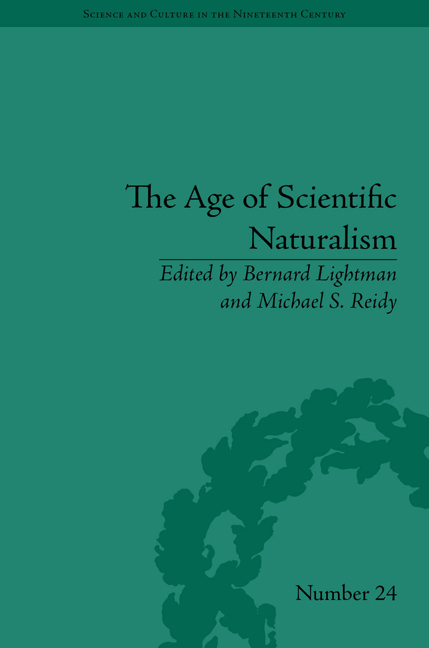Book contents
- Frontmatter
- CONTENTS
- Dedication
- Acknowledgements
- List of Contributors
- List of Figures
- Introduction: John Tyndall, Scientific Naturalism and Modes of Communication
- Part I John Tyndall
- 1 Saving the World in the Age of Entropy: John Tyndall and the Second Law of Thermodynamics
- 2 Getting Past the Greenhouse: John Tyndall and the Nineteenth-Century History of Climate Change
- 3 Tyndall, Lewes and Popular Representations of Scientific Authority in Victorian Britain
- Part II Scientific Naturalism
- Part III Communicating Science
- Notes
- Index
2 - Getting Past the Greenhouse: John Tyndall and the Nineteenth-Century History of Climate Change
from Part I - John Tyndall
- Frontmatter
- CONTENTS
- Dedication
- Acknowledgements
- List of Contributors
- List of Figures
- Introduction: John Tyndall, Scientific Naturalism and Modes of Communication
- Part I John Tyndall
- 1 Saving the World in the Age of Entropy: John Tyndall and the Second Law of Thermodynamics
- 2 Getting Past the Greenhouse: John Tyndall and the Nineteenth-Century History of Climate Change
- 3 Tyndall, Lewes and Popular Representations of Scientific Authority in Victorian Britain
- Part II Scientific Naturalism
- Part III Communicating Science
- Notes
- Index
Summary
In October of 2000, climatologist Mike Hulme and an interdisciplinary group of colleagues opened the doors to the Tyndall Centre for Climate Change Research at the University of East Anglia in the United Kingdom. Designed to bring together scientists, economists, engineers and business and policy advisors, the centre take sits name from John Tyndall, the nineteenth-century Irish physicist and mountaineer who identified and experimentally verified CO2 and water vapour as greenhouse gases between 1859 and 1862. As the Tyndall Centre has grown in size and public stature, so too has Tyndall increasingly become associated with his contribution to the discovery of the ‘greenhouse effect’, placing Tyndall himself near the beginning of a century-and-a-half genealogy of the modern science of climate change. For the Tyndall Centre researchers, the nineteenth-century name provides their twenty-first-century pursuits with the added weight and implied credibility of 150 years of scientific history. And for John Tyndall scholars, the association between the Tyndall name and modern climate change science offers our historical research a welcome visibility in the public eye.
While the ties between John Tyndall and the Tyndall Centre have been beneficial for all parties, I contend that the common presentation of Tyndall as a forefather of modern climate science is also problematic.
- Type
- Chapter
- Information
- The Age of Scientific NaturalismTyndall and his Contemporaries, pp. 33 - 50Publisher: Pickering & ChattoFirst published in: 2014



